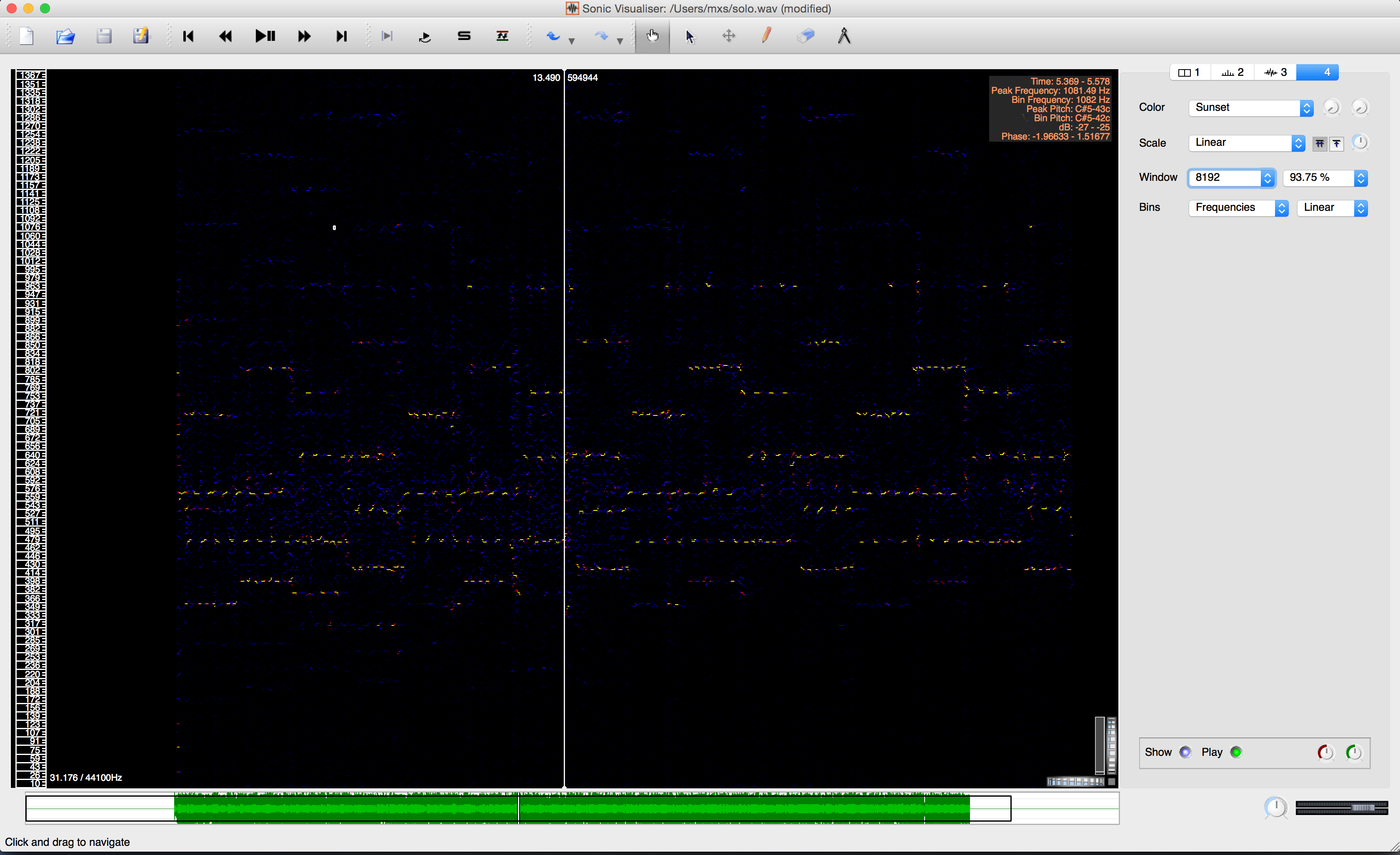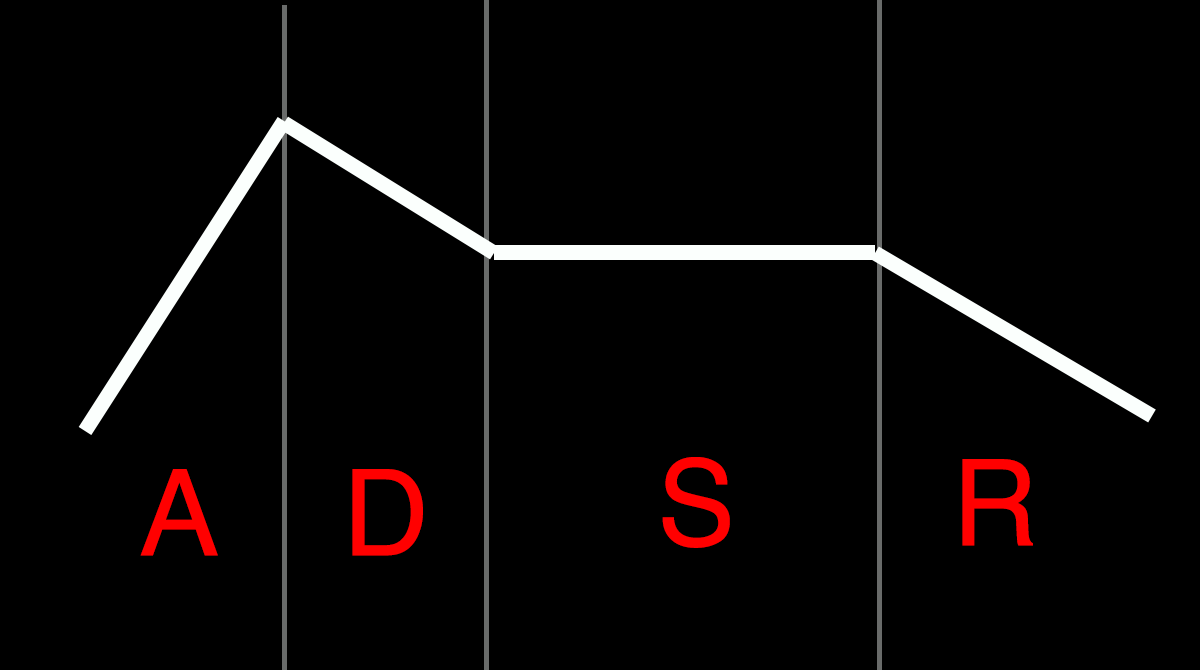Electric Solo
This article is part of the Aerodynamic guide.
We now move on to the solo part of the track, here’s what it
looks like once imported in Sonic Visualizer:

Here again, it is a spectrogram with in abcissa the time, and in ordinate the audio frequencies. We see horizontal stripes composed of spots (the active audio frequencies): these are the different notes. They are gathered in several phases, each phase being composed of 3 horizontal lines of a duration of 16 beats. When zooming on one of these phases, we see it is actually a repetition of notes in the following fashion:

We can get the note behind each spots with Sonic Visualizer, and recompose the first beat:
- play the note
Dduring 1/4 beat - play the note
Fsduring 1/4 beat - play the note
Eduring 1/4 beat - play the note
Fsduring 1/4 beat
By using an instrument with an electric timbre, we can already have something not far from what we are looking for in Sonic Pi:
use_bpm 123
use_synth :zawa
use_synth_defaults attack: 0.05, sustain: 0.15, release: 0.125
live_loop :solo do
play :D4
sleep 0.25
play :Fs3
sleep 0.25
play :B3
sleep 0.25
play :Fs3
sleep 0.25
end
We configure the zawa instrument with the parameters attack,
sustain and release. These parameters are what we call the
envelope of a sound (or ADSR) ; they define the way the intensity of
a note evolves with time :

Each letter corresponds to one of these sections (Attack,
Decay which we aren’t using here, Sustain, and
Release). To understand how they impact a note, the easiest way is
to update them in live and hear the difference (again, by editing the
code and by evaluating it with Run).
Factorisation
Instead of asking Sonic Pi to play a first note, then make a pause, then play a second note, then again another pause, …, we can formulate this in a better way:
use_bpm 123
use_synth :zawa
use_synth_defaults attack: 0.05, sustain: 0.15, release: 0.125
notes = [:D4, :Fs3, :B3, :Fs3]
live_loop :solo do
notes.each do |n|
play n
sleep 0.25
end
end
Which means:
- use a BPM of 123, use the zawa instrument, setup the ADSR of the instrument
- store in the list called
notesthe following notes: D4, Fs3, B3 and Fs3 - create a live loop in which…
- for each note
nfrom the listnotes… - play the note
n, then wait 0.25 beat
We obtain the same thing and we can modify the notes without having to worry about the code.
A few steps ahead
By using the same approach, we can get the 32 beats of the solo
part:
| Phase | Note 1 | Note 2 | Note 3 | Note 4 |
|---|---|---|---|---|
| #1 | D4 | Fs3 | B3 | Fs3 |
| #2 | D4 | Gs3 | B3 | Gs3 |
| #3 | G4 | B3 | E4 | B3 |
| #4 | E4 | A3 | Cs4 | A3 |
| #5 | D4 | Fs4 | B3 | Fs4 |
| #6 | D4 | Gs4 | B3 | Gs4 |
| #7 | G4 | B3 | E4 | B3 |
| #8 | E4 | A3 | Cs4 | A3 |
In the same fashion as for notes, we can iterate on a list containing each of these phases, and play them 4 times each:
live_loop :solo do
use_synth :zawa
use_synth_defaults attack: 0.05, sustain: 0.15, release: 0.125
phases = [
[:D4, :Fs3, :B3, :Fs3],
[:D4, :Gs3, :B3, :Gs3],
[:G4, :B3, :E4, :B3],
[:E4, :A3, :Cs4, :A3],
[:D4, :Fs4, :B3, :Fs4],
[:D4, :Gs4, :B3, :Gs4],
[:G4, :B3, :E4, :B3],
[:E4, :A3, :Cs4, :A3],
]
phases.each do |notes|
4.times do
notes.each do |n|
play n
sleep 0.25
end
end
end
end
This article is part of the Aerodynamic guide.